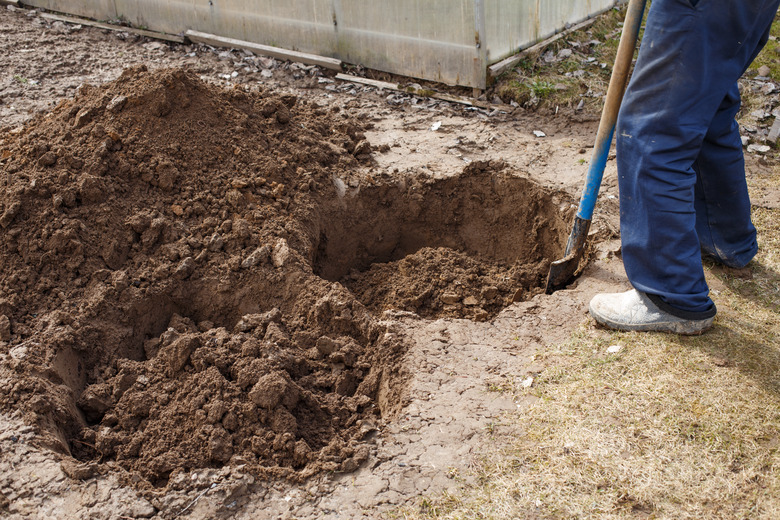The Percolation Rate For Various Soil Types
We may receive a commission on purchases made from links.
Percolation is the movement of water through soil, and the percolation rate is the speed at which that movement occurs. Soil laboratory professionals usually measure percolation rates in terms of minutes per inch, typically in the context of septic tank testing. Many do-it-yourself tests, however, measure percolation rates in terms of inches per hour, which is perfectly adequate for garden care. You can use percolation rates to make various soil and plant selection and management decisions for your garden and yard.
Percolation Rate by Soil Category
Percolation Rate by Soil Category
Percolation speed depends greatly on the soil type. Sandy soils usually have very high percolation rates. The percolation rate of sandy soil measures in the range of approximately 1 to 8 inches or more per hour. That means sandy soils dry out very quickly, heat up very quickly, and do not hold nutrients for very long.
Loamy soils have moderate percolation speeds, ranging from 1.02 to 2.41 inches per hour. This is the "Goldilocks" situation, in which soil holds water and nutrients long enough for plant roots to absorb them, but the soil does not easily become waterlogged. Clay soils have notoriously slow percolation speeds of 0.02 to 0.17 inches per hour. Therefore, clay soils easily become waterlogged, and plant roots can suffocate as a result.
The percolation rate for soil regardless of type can vary significantly from the percolation rate averages. This variation can be due to issues that include soil compaction, organic matter content, and/or soil temperature, yet soil types are by far the single biggest determinant for percolation rates.
How to Measure Soil Percolation Rate
How to Measure Soil Percolation Rate
You can estimate percolation speed based on general knowledge of your soil's type and/or through casual observation of how well it drains. You also can easily do a simple percolation test to determine a more precise percolation rate.
1. Dig the Test Hole
Dig a hole that is a minimum of 12 inches deep by 12 inches wide in the desired soil percolation rate testing area. If the testing area is large, dig several holes, spacing them throughout the area.
2. Saturate the Test Hole
Fill the test hole with water and wait for the water to drain into the soil. The water may drain relatively rapidly in less than one hour, or it may take a number of hours to drain.
3. Refill the Hole
Ensure the water has drained completely and refill each hole with water up to within 1 inch of its top.
4. Measure the Initial Water Level
Lay a wood board that is several feet long across the top of each hole. The board is the measuring baseline. Insert a yardstick or tape measure to the hole's bottom. Measure the distance from the measuring baseline (the board) to the water level. Write down this initial distance in a notebook along with the current time. Leave the board in position for subsequent measurements. Remove the yardstick or tape measure.
5. Measure the Water Level Change
Return to the test hole in 60 minutes and insert a yardstick or tape measure to the bottom of the hole. Measure the new distance from the board to the water level. Write down that measurement along with the current time.
6. Repeat Measurements
Continue to measure the distance between the water level and the board every hour until the hole is empty or for at least three additional measurements. Write down each new measurement and the time it was taken. After taking several measurements, determine how much the water level dropped between each measurement. The amount of change per hour is the soil's percolation rate.
Percolation Rate Modifications
Percolation Rate Modifications
You can change your particular soil's percolation speed to provide better growing conditions for plants by amending it. If the soil drains too quickly, then mix it with loam, compost, or even clay to slow percolation. For soil that drains too slowly, add loam, compost, or sand. Incorporating compost aids either situation by adding organic content.
Modifying percolation speed by adding sand, clay, compost, or loam can be done all at once prior to installing a garden. If a garden already has plants, then apply thin sheets of compost as a top-dressing on the soil surface each year. That method will slowly but steadily improve the soil's percolation speed over time as the compost works into the soil.
